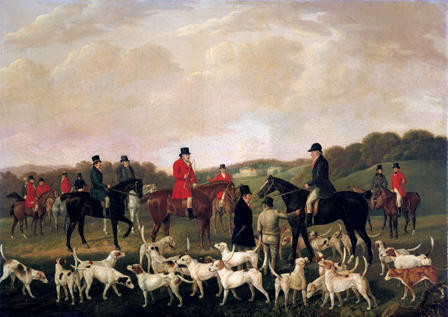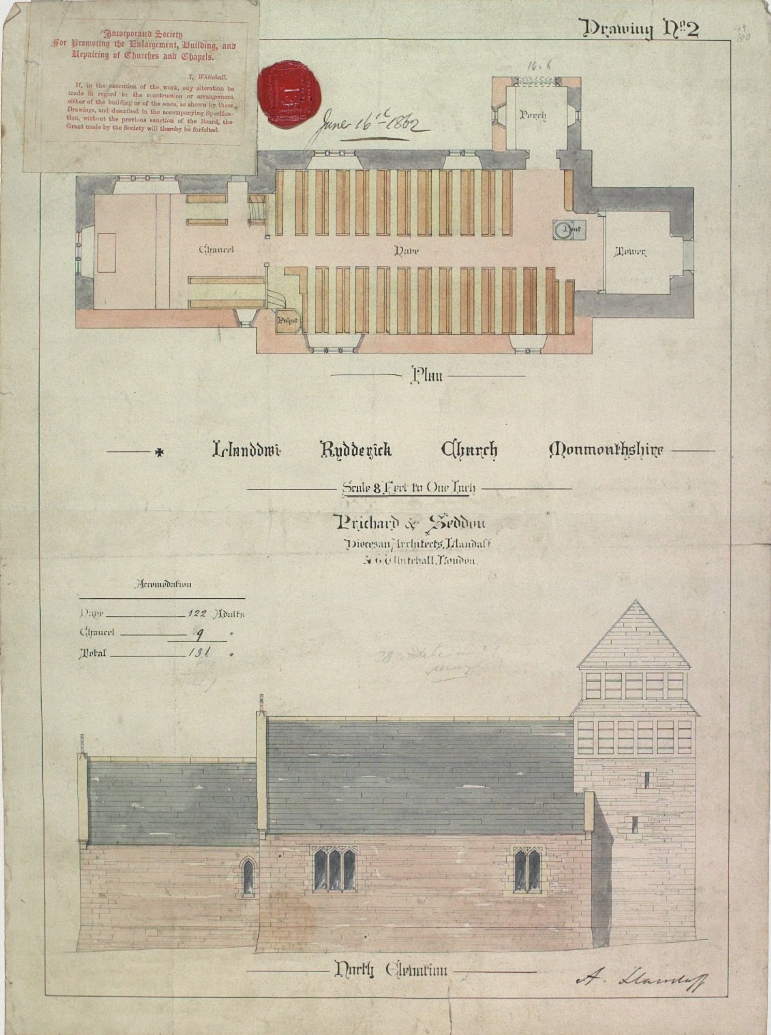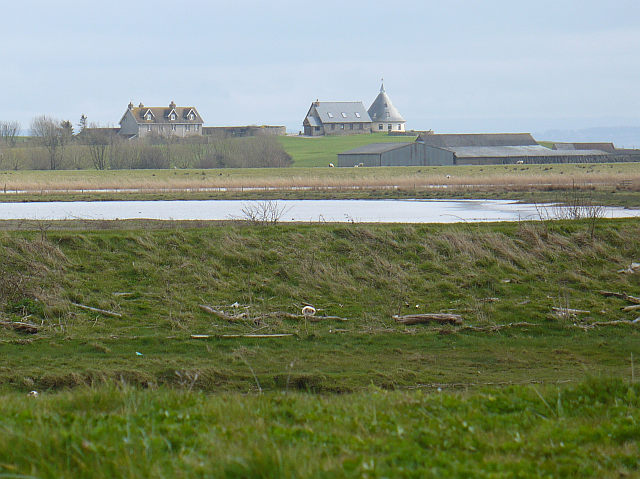|
Llanharan
Llanharan is a village and community in the county borough of Rhondda Cynon Taf, Wales. As a community Llanharan takes in the neighbouring settlements of Bryncae, Brynna, Llanilid, Peterston-super-Montem and Ynysmaerdy. Llanharan thrived during the British Industrial Revolution, with several tin and coal mines in the location providing employment to the town's residents. With the decline of heavy industry in the South Wales Coalfield, Llanharan has been in economic decline, though its proximity to the M4 motorway offers its residents easy commutable access to most of South Wales. Historically part of Glamorgan, the most recognisable features of Llanharan are its historic town square, Llanharan House and Church of St Julius and Aaron. Landmarks and notable buildings Llanharan House On the outskirts of Llanharan, overlooking the village, sits Llanharan House. It was built in 1750 by Rees Powell and stayed with the Powell family until 1795 upon which it was purchased by Richa ... [...More Info...] [...Related Items...] OR: [Wikipedia] [Google] [Baidu] |
Llanharan House
Llanharan House is a historic house on the outskirts of Llanharan, Rhondda Cynon Taf, Wales. It is located off the A473 road, just east of Llanharan and is a Grade II* listed building. History The house was built in 1750 by Rees Powell and stayed with the Powell family until 1795 upon which it was purchased by Richard Hoare Jenkins. Hoare Jenkins was a High Sheriff of Glamorgan who was involved in the suppression of the Merthyr Rising of 1831 and is recorded as stating that he found the execution of Dic Penderyn the most difficult of his civic duties. Around 1800 some major improvements were made to the house with the addition of a three-storey circular stair hall which includes a dramatic geometrical staircase. Following the death of Hoare Jenkins in 1856 the house and the estate was passed to a Colonel John Blandy-Jenkins. Following his death in 1915 Colonel Blandy-Jenkins's wife kept the house until 1953, after which it was bought by Sir George Williams CBE MC, of the Willi ... [...More Info...] [...Related Items...] OR: [Wikipedia] [Google] [Baidu] |
Brynna
Brynna ( cy, Brynnau) is a small village situated between Pencoed and Llanharan. It is located at the point where the borders of two Welsh county boroughs, Rhondda Cynon Taf and Bridgend, meet. Due to Brynna's proximity to the M4 motorway as well as both Pencoed and Llanharan railway stations, it offers residents easy access to most of South Wales. Brynna was originally called Brynna Gwynion but church records show that it was later shortened to Brynna from 1897 onwards.Rhondda Cynon Taf Education Brynna is home to one , Brynnau Primary School and is a[...More Info...] [...Related Items...] OR: [Wikipedia] [Google] [Baidu] |
Llanilid
Llanilid is a small settlement of in the county borough of Rhondda Cynon Taf, Wales. It is in the historic county of Glamorgan. Llanilid is part of the community of Llanharan along with the villages of Bryncae, Brynna, Ynysmaerdy, Peterston-super-Montem and Llanharan itself. History Since the time of the Norman Conquest Llanilid and neighbouring Llanharan were part of the Welsh lordship of Ruthin, one of the lordships of Glamorgan in the cantref of Penychen.Williams (1971), p.206 The region was wild and heavily wooded, consisting of scattered hamlets in the clearings and the land was predominantly taken to pastoralism. Tradition states that Rhys ap Jestyn was granted lordship of the region by the Normans, but there is little historical proof of this. It is known that the Normans left the region fairly untouched, though the motte in Llanilid, believed to be Norman in construct, show evidence of encroachment into the area. Eventually the lordship of Ruthin was partitioned, ... [...More Info...] [...Related Items...] OR: [Wikipedia] [Google] [Baidu] |
Ogmore (UK Parliament Constituency)
Ogmore ( cy, Ogwr) is a constituency created in 1918 represented in the House of Commons of the UK Parliament by Chris Elmore of the Labour Party. Boundaries 1918–1983: The Urban Districts of Bridgend, Maesteg, and Ogmore and Garw, and part of the Rural District of Penybont. 1983–2010: The Borough of Ogwr wards of Bettws, Blackmill, Blaengarw, Caerau, Llangeinor, Llangynwyd, Maesteg East, Maesteg West, Nantyffyllon, Nant-y-moel, Ogmore Vale, Pencoed, Pontycymmer, St Bride's Minor, and Ynysawdre, and the Borough of Taff-Ely wards of Brynna, Gilfach Goch, Llanharan, and Llanharry. 2010–present: The Bridgend County Borough electoral divisions of Aberkenfig, Bettws, Blackmill, Blaengarw, Bryncethin, Bryncoch, Caerau, Cefn Cribwr, Felindre, Hendre, Llangeinor, Llangynwyd, Maesteg East, Maesteg West, Nant-y-moel, Ogmore Vale, Penprysg, Pontycymmer, Sarn, and Ynysawdre, and those in Rhondda Cynon Taff County Borough of Brynna, Gilfach Goch, Llanharan, and Llanharry. Tak ... [...More Info...] [...Related Items...] OR: [Wikipedia] [Google] [Baidu] |
John Prichard
John Prichard (6 May 1817 – 13 October 1886) was a Welsh architect in the neo-Gothic style. As diocesan architect of Llandaff, he was involved in the building or restoration of many churches in south Wales. Personal history John Prichard was born in Llangan, near Cowbridge, Wales on 6 May 1817, the twelfth son of the rector Richard Prichard, who served as vicar-choral of Llandaff for 35 years. He was descended from the Prichard family of Collenna. John Prichard trained as an architect under Thomas Larkins Walker, and as a result was deeply influenced by the ideas of Augustus Pugin; much of his work was in a neo-Gothic style. He established a practice in Llandaff, Cardiff, becoming 'Resident Diocesan Architect' in December 1844. Between 1852 and 1863 he was in partnership with John Pollard Seddon. Many of his major commissions were restoration works, most famously for Llandaff Cathedral (1843–69); Prichard and Seddon worked on the cathedral from the 1840s until ... [...More Info...] [...Related Items...] OR: [Wikipedia] [Google] [Baidu] |
Bridgend
Bridgend (; cy, Pen-y-bont ar Ogwr or just , meaning "the end of the bridge on the Ogmore") is a town in Bridgend County Borough in Wales, west of Cardiff and east of Swansea. The town is named after the medieval bridge over the River Ogmore. The River Ewenny also flows through the town. The population was 49,597 in 2021. Historically a part of Glamorgan, Bridgend has greatly expanded in size since the early 1980s – the 2001 census recorded a population of 39,429 for the town and the 2011 census reported that the Bridgend Local Authority had a population of 139,200 – up from 128,700 in 2001. This 8.2% increase was the largest increase in Wales except for Cardiff. The town is undergoing a redevelopment project, with the town centre mainly pedestrianised and ongoing works including Brackla Street Centre redevelopment to Bridgend Shopping Centre, Rhiw Car Park redevelopment, ongoing public realm improvements and the upgrade of the Bridgend Life Centre and demolition of ... [...More Info...] [...Related Items...] OR: [Wikipedia] [Google] [Baidu] |
High Sheriff Of Glamorgan
This page is a list of High Sheriffs of Glamorgan. Sheriffs of Glamorgan served under and were answerable to the independent Lords of Glamorgan until that lordship was merged into the crown. This is in contrast to sheriffs of the English shires who were from the earliest times officers of the crown. Sheriffs in the modern sense, appointed and answerable to the crown, were instituted in the county of Glamorgan in 1541. On 1 April 1974 the shrievalty of Glamorgan was abolished and replaced by the High Sheriff of West Glamorgan, the High Sheriff of Mid Glamorgan and the High Sheriff of South Glamorgan. List of Sheriffs *1122–1149 Sir Robert Norreis *1322 Sir Henry de Wylyngton Barony of Willington of Keir Kenny (Carreg Cennen Castle) *1421 Sir John Stradling Clark, G.T. ''Cartae et Alia Munimenta quae ad Dominium de Glamorgan. Pertinent'', Cardiff, 1891, vol.4, Charter no.1116, pp.1486-1488. Witnessed inspeximus of Lord of Glamorgan dated 20/4/1421, described as ''vicecomite n ... [...More Info...] [...Related Items...] OR: [Wikipedia] [Google] [Baidu] |
Ynysmaerdy
Ynysmaerdy is a village near Talbot Green and Llantrisant in Rhondda Cynon Taf, Wales. Even though there is no direct access to the village of Llanharan, due to older parish boundaries it falls under the community A community is a social unit (a group of living things) with commonality such as place, norms, religion, values, customs, or identity. Communities may share a sense of place situated in a given geographical area (e.g. a country, villag ... of Llanharan. It is home to the Royal Glamorgan Hospital. Notes Villages in Rhondda Cynon Taf Llantrisant {{Rhondda-Cynon-Taff-geo-stub ... [...More Info...] [...Related Items...] OR: [Wikipedia] [Google] [Baidu] |
Ogmore (National Assembly For Wales Constituency)
, constituency_type = Senedd county constituency , parl_name=Senedd, image = , caption = Ogmore shown as one of the 40 Senedd constituencies , year = 1999 , parts_label = Electoral region , parts = South Wales West , member_label = MS , member = Huw Irranca-Davies , party_label = Party , party = Labour , blank1_name = Preserved county , blank1_info = Mid Glamorgan and South Glamorgan Ogmore ( cy, Ogwr) is a constituency of the Senedd. It elects one Member of the Senedd by the first past the post method of election. It is one of seven constituencies in the South Wales West electoral region, which also elects four additional members, to produce a degree of proportional representation for the region as a whole. Boundaries The constituency was created for the first election to the Assembly, in 1999, with the name and boundaries of the Ogmore Westminster ... [...More Info...] [...Related Items...] OR: [Wikipedia] [Google] [Baidu] |
Rhondda Cynon Taf
Rhondda Cynon Taf (; RCT; also spelt as Rhondda Cynon Taff) is a county borough in the south-east of Wales. It consists of five valleys: the Rhondda Fawr, Rhondda Fach, Cynon, Taff (Welsh: ''Taf'') and Ely valleys, plus a number of towns and villages away from the valleys. Results from the 2011 census showed 19.1% of its 234,410 residents self-identified as having some ability in the use of the Welsh language. The county borough borders Merthyr Tydfil County Borough and Caerphilly County Borough to the east, Cardiff and the Vale of Glamorgan to the south, Bridgend County Borough and Neath Port Talbot to the west and Powys to the north. Its principal towns are - Aberdare, Llantrisant with Talbot Green and Pontypridd, with other key settlements/towns being - Maerdy, Ferndale, Hirwaun, Llanharan, Mountain Ash, Porth, Tonypandy, Tonyrefail and Treorchy. The most populous individual town in Rhondda Cynon Taf is Aberdare ( cy, Aberdâr) with a population of 39,550 (2011), ... [...More Info...] [...Related Items...] OR: [Wikipedia] [Google] [Baidu] |
Julius And Aaron
Julius and Aaron (also Julian) were two Romano-British Christian saints who were martyred around the third century. Along with Saint Alban, they are the only named Christian martyrs from Roman Britain. Most historians place the martyrdom in Caerleon, although other suggestions have placed it in Chester or Leicester. Their feast day was traditionally celebrated on 1 July, but it is now observed together with Alban on 20 June by the Roman Catholic and Anglican Churches. The earliest surviving account of Julius and Aaron comes from Gildas, a monk writing in Western Britain during the sixth century. How accurate his account of events that occurred three centuries before is remains unknown. Gildas' account was later repeated by the eighth-century Anglo-Saxon monk Bede. References to Julius and Aaron were included in the work of later medieval authors like Geoffrey of Monmouth and Giraldus Cambrensis. Gildas implied that a martyrium dedicated to Julius and Aaron was present by the ... [...More Info...] [...Related Items...] OR: [Wikipedia] [Google] [Baidu] |
Heavy Industry
Heavy industry is an industry that involves one or more characteristics such as large and heavy products; large and heavy equipment and facilities (such as heavy equipment, large machine tools, huge buildings and large-scale infrastructure); or complex or numerous processes. Because of those factors, heavy industry involves higher capital intensity than light industry does, and it is also often more heavily cyclical in investment and employment. Though important to economic development and industrialization of economies, heavy industry can also have significant negative side effects: both local communities and workers frequently encounter health risks, heavy industries tend to produce byproducts that both pollute the air and water, and the industrial supply chain is often involved in other environmental justice issues from mining and transportation. Because of their intensity, heavy industries are also significant contributors to greenhouse gas emissions that cause ... [...More Info...] [...Related Items...] OR: [Wikipedia] [Google] [Baidu] |



